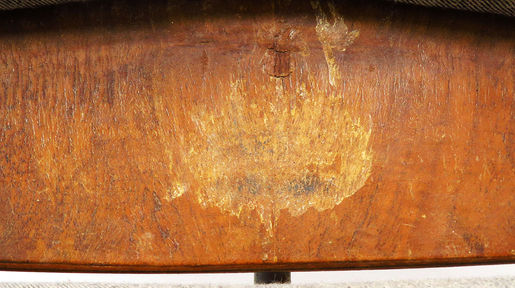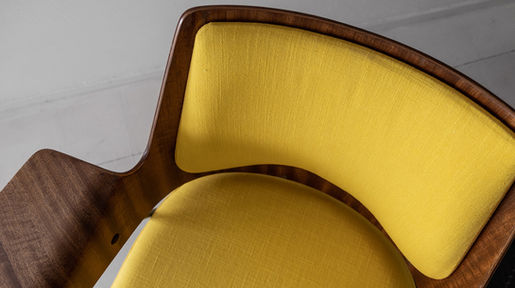Trends
SEARCH BY CATEGORIES
July 7, 2022 – Published in Design & Decor Spring-Summer 2022 issue
Reproposing bygone designer furniture in contemporary interior designs
Words: Josef Aquilina
Photography: Brian Grech
Mid-Century Modern design has re-emerged as the leading trend in commercial and domestic spaces. Its functional simplicity, bold statements and material blends, work well with contemporary interiors.
Popular solutions include the amalgamation of contemporary design pieces with ones which embody the revisiting of Mid-Century Modern examples, such as the interiors being proposed by Martin Brudnizki’s design studio. In the search for authenticity, designers are increasingly proposing the incorporation of genuine Mid-Century Modern pieces. The intrinsic value of original furniture hailing from this era is ever more being recognised, as they are getting rarer and harder to come by, thus making a worthwhile investment.
The renewed interest in Mid-Century Modern furniture, composed of an array of different materials, at times innovative at the age and intrinsically very different in nature, has generated the need for a new breed of furniture conservators.
The traditional training for furniture restorers lacks the skill set required to face challenges presented by unconventional pieces. The new generation professional furniture conservator is one equipped with specialized skills and competences to treat both traditional materials in their evolved uses and new unconventional materials. Such skills are acquired through specialized training and continuous investment in research and professional growth. Guided by progress in research and developments in ethics and philosophy, the academically-trained furniture conservator can approach the object from an elevated perspective.
Parallel to this, the phenomenon of recycling and reutilisation in an age where the environmentally conscious approach is being promoted, has led to the creation of what is commonly termed “upcycled” furniture. This has often been confused with furniture conservation, but the differences are stark and easy to define. While upcycling gives a new life to an object without the limitations of respecting its original intended use and designed aesthetics, conservation, on the contrary, seeks to preserve and enhance precisely that. An example of the latter is the intervention carried out on this pair of 1950s 658 Moulded Lounge Chairs designed by Robin Day.
Robin Day was one of the most important British furniture designers of the twentieth century, where together with his wife, Lucienne Day, introduced and promoted modernist design. Their designs and choice of materials was aimed towards a broader market. The chair was originally designed in 1951 for the Royal Festival Hall at the Festival of Britain and featured a luxurious copper plated steel finish. After the festival the chair was produced by furniture company Hille, from 1951 to 1955, the copper frame replaced with a grey painted steel frame. The design sought to take advantage of new technologies and industrial design processes, such as developments in the moulding of plywood and new adhesives which made it possible for designers to dare and experiment. The floating, moulded ply section of the model 658 chair was then replaced by the more robust, but less sensational, 700 model in order to address stability issues.
The armchairs were brought to the studio in a condition which rendered them unappealing to the eye due to their unkempt state, with aged varnish, corroding metal frame, unstable structure, and a stained damaged foreign upholstery. The beauty of the walnut veneer was unmasked through the careful removal of the varnish. Structural repairs restored stability and functionality, while all the remaining metal fixtures were carefully treated and reinstated. Missing ironmongery was replaced with replicas. Following research, the new upholstery, including choice of fabric and technique, and colour for the steel frame were chosen in order to transmit as faithfully as possible the designer’s original intentions. Once complete, these armchairs took their deserving centre stage in a contemporary setting, illustrating their versatility.
The richness that such pieces bring into orchestrated interior compositions, designed precisely to maximise their potential, makes undertaking such conservation projects extremely rewarding.
JOSEF AQUILINA is a Warranted Conservator who specialized in wood conservation with a degree conferred by the Istituto per il restauro ligneo – Città di Piacenza, Italy, and furthered his education at the NTNU. He has followed various specialization courses both locally and abroad and is currently reading for a Masters Degree in Preventive Conservation at the University of Northumbria. Amongst other milestone projects, he had the opportunity to conduct works in St John’s Co-Cathedral and the Palace of the Grand Masters in Valletta, and has collaborated with several foreign Institutions and firms. One of his published articles was shortlisted for the 2018 “Malta Historical Society Publication Awards”. In 2016, he co-founded the studio CREAID which offers specialized services in Conservation, Architecture and Design. The Studio won he Prix d’Honneur in its category at the 2021 “Din l-Art Ħelwa Awards for Architectural Heritage”, for the restoration and conservation of the eighteenth century façade of Casa Manresa in Floriana.

More Posts
- 91Page 1






















